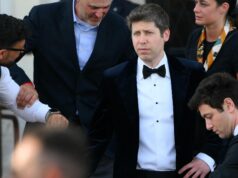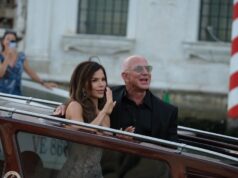Despite having been released 90 years ago, in 1933, King Kong still stands tall as the greatest monster movie of all time. In part, that’s because Kong himself was made for the movies. Unlike Dracula, Frankenstein’s creature and other such fiends, he didn’t emerge from a novel or a folk tale. The idea of an overgrown, awe-inspiring ape was conceived as a purely cinematic spectacle by Merian C Cooper, who co-directed the film with his friend Ernest B Schoedsack. The men were already well known for their silent documentaries, Grass (1925), and Chang (1927), featuring exotic animals in far-off lands, but Cooper fancied making a fictional “terror gorilla picture”. All he needed was “a chariot race”, he recalled (as quoted in Celluloid Skyline by James Sanders), meaning a climactic sequence to compare with the frenetic chariot race in 1925’s Ben-Hur: A Tale of the Christ. One day in New York, he saw a plane flying past a skyscraper, and realised that he could add his gorilla to the tableau. “And I remember saying aloud to myself, ‘Well, if that isn’t a chariot race, I don’t know what is.'”
More like this: – The most shocking film of 2023? – A game-changingly bizarre Dracula movie – Why Nosferatu still scares, 100 years on
Sure enough, the tragic set piece in which Kong clambers up the Empire State Building with Ann Darrow (Fay Wray) in his hand, before being strafed by biplanes and plummeting to the pavement, is one of the most famous, most heart-rending, and most parodied sequences in cinema history. It’s a sequence that couldn’t work on stage, in prose, on the radio, or anywhere else except in a big-screen blockbuster.
We first encounter the colossal primate on an island, in a wilderness filled with prehistoric creatures (Credit: Getty Images)
Nor would it work without the film’s iconic title character, who prompts a unique balance of fear and sympathy. From the moment he crashes into view in a primeval jungle, Kong is more obviously frightening than any other movie monster: with a height that varies between 18ft and 60ft, as the scene demands, he can squash the competition flat with one titanic foot stomp. But no other movie monster gets the viewer on his side so quickly. Within minutes, he is fighting for survival with a Tyrannosaurus rex and a Pteranodon, and he has the most understandable human motive for his behaviour: he’s got the hots for Fay Wray. More importantly, the film’s chief model-maker, animator and special effects specialist, Willis H O’Brien, invests him with far more personality and soul than Godzilla would ever have. Ticking off every trick in the pre-CGI book, O’Brien often puts real actors, matte paintings, miniatures, and stop-motion animation in the same frame with an ingenuity that still seems like wizardry.
King Kong isn’t just a great monster movie, though. It’s also one of Hollywood’s best films about Hollywood. In the last year, Jordan Peele’s Nope used monster-movie tropes to comment on the film industry, and Damien Chazelle’s Babylon revelled in the insanity of Tinseltown in the 1920s. Yet King Kong got there first, commenting on itself with a wit that seems positively postmodern, and condemning monomaniacal directors decades before their peers began to frown upon them.
Just to make Cooper’s preoccupations clear, the very first line of dialogue is, “Say, is this the moving-picture ship?” The ship in question, docked in New York, has been chartered by Carl Denham (Robert Armstrong), a director who specialises in documentaries remarkably like Cooper and Schoedsack’s. He is notoriously cavalier about his cast and crew’s safety: he sacked his last cameraman for abandoning his post just because a rhino was charging at him. His ambition now, he says, is “to make the greatest picture in the world, something no one has ever seen before”. And so, rather than introducing us to treasure hunters, explorers or zoologists, King Kong devotes its opening act to a director grumbling about audiences and critics. He’s prepared to travel for thousands of miles to capture some footage of a gigantic demonic beast he’s heard about, but, he complains, the public insists on films having “a pretty face” and “romance”.
These days, we’d call it “meta”. Cooper wanted to move on from globe-trotting documentaries to groundbreaking horror epics, so he made a film about Denham, who wants to move on from globe-trotting documentaries to groundbreaking horror epics. And just after Denham grumbles about bringing in “a pretty face” and “romance”, Cooper brings in Ann, who embarks on a romance with the ship’s hunkiest crewmember, Jack Driscoll (Bruce Cabot).
The filmmakers lure King Kong out of the jungle and take him to New York, with the aim of becoming rich (Credit: Getty Images)
But if Denham is Cooper’s self-portrait, it’s not exactly a flattering one. No professional actress will agree to sail away for weeks to an unknown destination with an infamously reckless director, so Denham resorts to prowling nocturnal New York, looking for desperate women, until he finds Ann, who is hungry enough to take whatever job she can get. He assures her that there will be “no funny business”. But he doesn’t mention that he’s taking her to a remote, uncharted island to film her alongside a simian the size of a house. The only clue comes in another postmodern scene in which he instructs her on how to scream for the camera: “You’re helpless, Ann! Helpless! Scream for your life!” Considering that Ann will soon be screaming for real, it’s interesting that the screenplay was co-written by Ruth Rose, a woman who knew all about macho filmmakers. She based Denham on Cooper, and Driscoll on Schoedsack, who happened to be her husband.
A cautionary tale
Eventually the ship reaches its destination, a small island bisected by a vertiginous wall. On one side is the wilderness inhabited by a colossal primate, Kong, and all manner of prehistoric creatures. On the other is a village of primitive tribespeople who worship him. The islanders with their painted faces and human sacrifices are problematic, as Spike Lee, among other commentators, has noted: Lee includes clips from King Kong in his montage of racist films in BlacKkKlansman. But the tribespeople are certainly not as heartless as Denham. In the course of his adventures, 12 crewmembers are killed, but the director is still willing to use Ann as bait to draw the gargantuan ape out of the jungle: “We’ve got something he wants,” he crows. The deaths don’t appear to bother him. What matters is his revised plan: to bring Kong back to New York, where he can make them all rich.
This theme of overweening show-business ambition is just one aspect that makes King Kong more layered than its remakes. In the 1976 version, starring Jeff Bridges and Jessica Lange, the adventurers are looking for oil, not the star of their next film, so it doesn’t make much sense when they bring Kong back to New York. Three decades later, Peter Jackson’s 2005 remake returns to the original characters, but the jovial actor he cast as Denham, Jack Black, is hardly convincing as a rugged, obsessive showman.
A better companion piece to King Kong would be Mighty Joe Young, from 1949, which was made by the same team of Schoedsack, Cooper, Rose and O’Brien (with O’Brien’s protégé, Ray Harryhausen, doing most of the animation). It even co-starred Armstrong as a Denham-like impresario. Almost an unofficial sequel to or remake of their 1933 classic, this one has a giant gorilla (though not as giant as Kong) being taken to Hollywood to join the cabaret in a Sunset Strip nightclub. Once again, their thesis seems to be that life in front of cameras and audiences doesn’t always turn out well.
Still, Mighty Joe Young gets to leave Hollywood and return to his home in Africa. Poor Kong isn’t so lucky. Billed as “The Eighth Wonder of the World”, he is chained up and exhibited on the stage of a Broadway theatre. After being driven mad by press photographers’ flashbulbs, he breaks free, and makes his fateful ascent of the Empire State Building. For a brief moment, he is a true superstar: the talk of the town, literally on top of the world, with a blonde starlet by his side. But, like so many other superstars, he is soon brought down to Earth.
At the film’s climax, King Kong breaks free and makes his fateful ascent of the Empire State Building (Credit: Getty Images)
Denham, of course, doesn’t take responsibility. His final word on the matter is the film’s immortal last line: “It was beauty killed the beast.” Maybe he means it. But before he ever laid eyes on Kong, Denham declared that he wanted to make a motion picture about a beast being destroyed by a beauty, so the audience is left with a tantalising question: is this chaos and bloodshed what he was imagining all along?
King Kong is a cautionary tale of Hollywood to file alongside Babylon, Boogie Nights, Blonde and more – and it’s the only one of them with dinosaurs. It’s the story of a fabulous physical specimen who is wrenched from his home and whisked to the big city, of a destitute young woman who is wrenched from the streets and whisked to the jungle, and a mercenary director who exploits them both. And, in fact, it’s true in another sense that Kong wasn’t killed by a beauty, but by a film director – or two film directors, to be precise. The pilots of the planes which pepper him with bullets are played by Cooper and Schoedsack, after Cooper suggested “we kill the sonofabitch ourselves”.
Love film and TV? Join BBC Culture Film and TV Club on Facebook, a community for cinephiles all over the world.
If you would like to comment on this story or anything else you have seen on BBC Culture, head over to our Facebook page or message us on Twitter.
And if you liked this story, sign up for the weekly bbc.com features newsletter, called The Essential List. A handpicked selection of stories from BBC Future, Culture, Worklife and Travel, delivered to your inbox every Friday.









